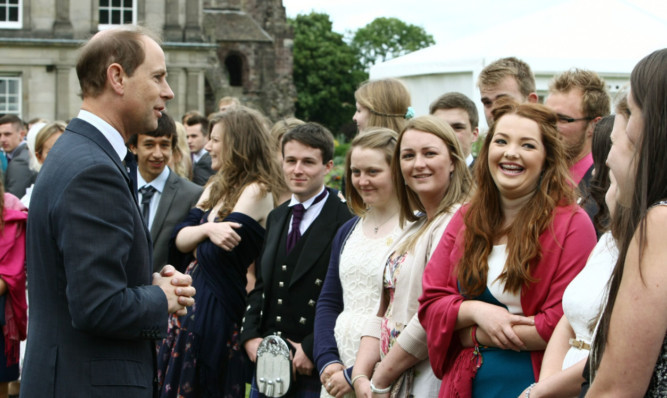The sun shone over a glittering gold Duke of Edinburgh’s Awards ceremony at the Palace of Holyroodhouse in Edinburgh.
Over three ceremonies held on Wednesday and Thursday afternoons, more than 1,000 young men and women had the chance to meet the Earl of Wessex deputising for his father the Duke of Edinburgh and receive their gold awards from guest presenters who came from the worlds of television, music, sport and the government.
This year saw a record high in the number of young people from voluntary organisations, including Girlguiding Scotland, Army Cadet Force and the Scout Association, receiving their awards.
It was because of this increase that the awards added an extra presentation to this year’s annual ceremonies.
Young people from voluntary organisations represent more than 10% of the total number of award recipients this year across the UK.
Each participant has gained their gold award as a result of completing a range of activities and challenges over an 18-month period. All have worked through five sections volunteering, physical, skills, expedition and residential.
Last year, more than 17,300 young people took up the challenge of a Duke of Edinburgh programme in Scotland alone. Around 31,000 participate in the programme north of the border at any one time.
In total, more than two million awards have been achieved in the UK since 1956, when it was founded by Prince Philip. Across the UK, more than 300,000 young people are undertaking their awards.
Last year, 211,900 young people embarked on the programme and more than 92,000 achieved a bronze, silver or gold an increase of 13% from the previous year.
In total, more than five million people have participated.
